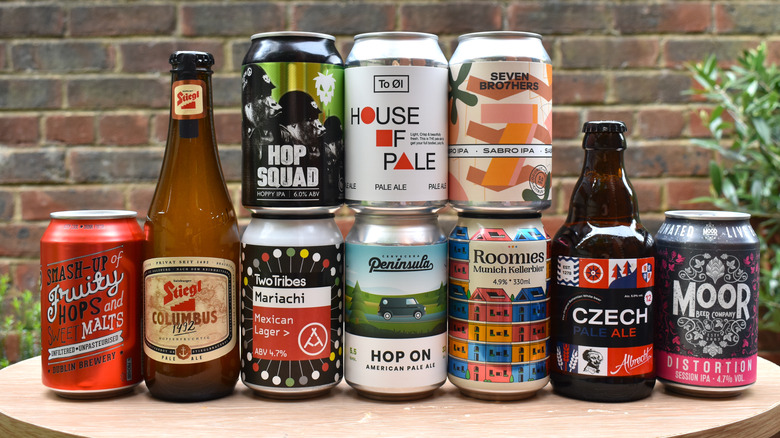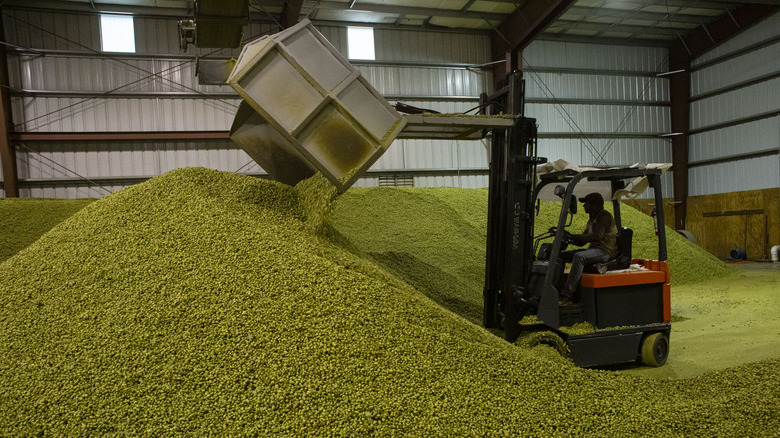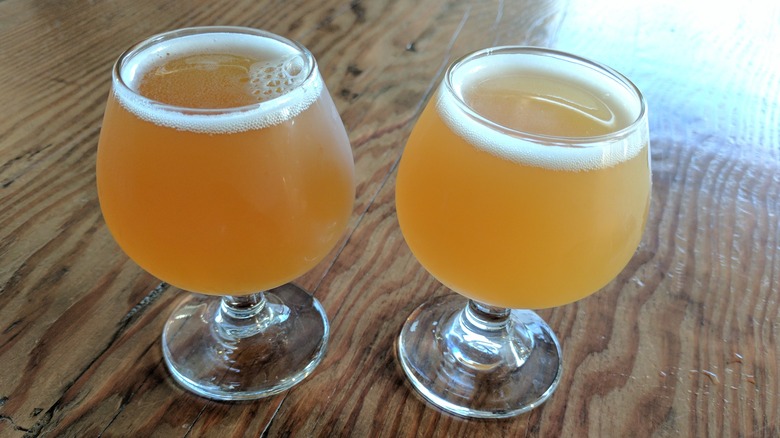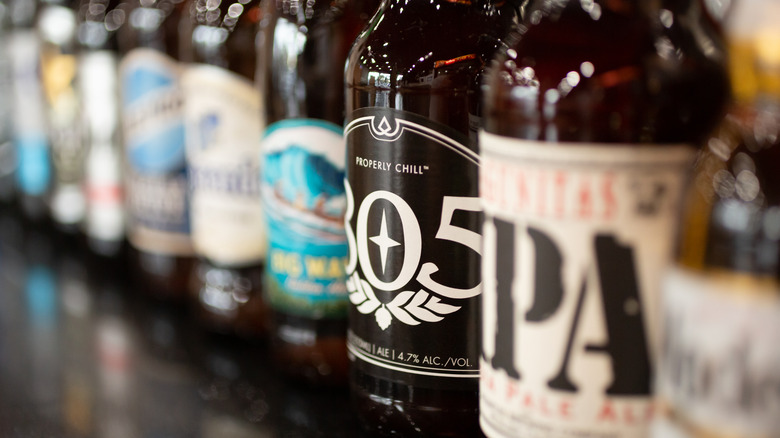Everything You Need To Know About IPAs
While IPAs can be daunting, don't let them intimidate you; with a little education and some dedication, you will feel your confidence start to grow. In fact, it's a good idea to give your IPA a call at the beginning of every tax season, before things start to get too busy and they get overwhelmed with requests...Wait, what? What do you mean? (*Checks notes*) Ohhhhh, IPAs. Not CPAs. Got it. Well, they require the same approach, actually.
Let's get some things straight first: IPA stands for India Pale Ale. It is a title bestowed upon the hoppier ales of the beer world because the beer was borne of the East India Company's trade route between London and Bombay (via Smithsonian Magazine). Back in the day (read: the 1800s), there were British soldiers stationed in colonized India who, upon receiving supply ships filled with goodies from home, fell in love with the strong, pale ale that came with each shipment. The folks back in jolly old England had elected to send the soldiers barleywine, or "October beer" — a rich, syrupy ale that was made to be aged, and had added hops to keep its taste fresh. It was the only beer of its kind that could survive the long voyage to India, where, according to Smithsonian Magazine, the Calcutta Gazette declared it: "Fully equal, if not superior, to any ever before received in the settlement."
How is an IPA made?
Today, IPAs are made like any other beer, very simply, but with a plethora of possible outcomes. As The Daily Meal points out, beer at its purest state consists primarily of four ingredients: water, grain, hops, and yeast. It's the variation among each of those ingredients that gives a beer its unique color, scent, and taste, and the fermentation process that makes a beer fall into one of two categories: ale or lager. Pale ales are defined by their lighter color, and most American pale ales will be bright and zesty, due to the citrusy nature of the hops contained therein.
But with IPAs, the attention paid to hops becomes laser-focused. Hops are a flower, shaped like a pinecone, that have a huge effect on the taste and aroma of your beer, and they are what give beer its bitter bite (via The Daily Meal). IPAs are hop-heavy ales, which, according to Craft Beer & Brewing, makes them a forgiving beer to brew. Mistakes and whoopsie-daisies are covered nicely by the characteristically complex flavor of the hops, while the flowers' ephemeral nature means that your beer will taste best right out of the barrel. Or bathtub. Whatever — it's best fresh. And while it's true that IPAs are way hoppier than other beers, the other variables involved in the process mean that IPAs can come in many styles, and range in flavor from the very bitter to the sweet and sour.
What does an IPA taste like?
Contrary to popular belief, not all IPAs are bitter. Some of them have just seen too many tax returns; they've been in the game so long they're starting to get burned out...Wait, that's CPAs again. Back to IPAs. Well, just like their accountant counterparts, IPAs come in all different shapes and sizes, and making a blanket statement like "all IPAs are bitter" is just not fair. Bon Appétit reminds readers that an IPA's flavor profile will depend not only on the volume of hops used but the type of hops and at what point during the fermentation process they are added to the brew.
With the exception of single-hopped beers, IPAs are brewed with a blend of hop varieties — for the same reason, Bon Appétit points out, you put several different types of seasoning in a marinade: "to bring different flavors to the table." British IPAs tend to taste bitter and one-noted, while American IPAs capitalize on those citrusy hops you know from favorite breweries like Sierra Nevada, to make bright, crispy, fruit-forward beers. Belgian IPAs will bring a honeyed, warm tingle to your tongue, while Milkshake IPAs taste oddly like zucchini. (Just kidding, they taste like milkshakes.)
West Coast IPAs vs. East Coast IPAs
Not since Tupac and Biggie has the world been so divided in their coastal loyalties. Okay, maybe it's not that serious, but there is a huge distinction in flavor between West Coast IPAs and their East Coast cousins. "The West Coast IPA was the beginning of the fruity hop explosion," explains Bon Appétit. While the beer still has the trademark IPA bitterness, the bite is balanced with a tropicality that makes for a crisp, fruity finish.
East Coast IPAs are a bit closer to their British forefathers — both geographically and taste-wise — as their hop strains would be more reminiscent of a British beer (though not as one-note). The bitterness of an East Coast IPA makes it a stark contrast to the brighter West Coast IPAs, with what Bon Appétit calls a "piney hop flavor and solid malt backbone." Just don't confuse them with New England IPAs; these brews are perhaps the least bitter of them all, and the beer best suited for the person in your life who might be wary of IPAs in general thanks to their fruity, cloudy flavor and look (via Vine Pair).
Why are IPAs so popular?
If it feels like everyone has an opinion about IPAs, it's because they are unavoidable. IPAs, that is, not opinions; people's opinions are harder to avoid, but not impossible. While IPAs have been around for a long time (see: those supply ships in the 1800s we talked about), they certainly boomed in a big way with the spread of craft breweries in recent years (via Business Insider). IPAs tend to be most people's first step in the craft beer world — it's a beer style with more depth and street cred than a Bud Light, without being as intimidating as a Belgian sour brewed by Trappist monks, for example (via Wall Street Journal).
As Craft Beer & Brewing mentioned, IPAs are an exciting beer to brew, with a huge return on investment in the flavor profile department, so big breweries and homebrewers alike are sure to have an IPA (or 10) on their menu. And if you haven't gotten on the IPA train because you think they're too bitter, or their ABV is too high, there are styles out there that address both concerns (like New England IPAs and session IPAs, respectively). IPAs are hyped for a reason; they are a beer-drinker's beer, and they're incredibly versatile. With so many styles, it might be best to shop around until you find an IPA that suits your tastebuds, because — kind of like tax season — you can depend on IPAs to be around for a long, long time.




